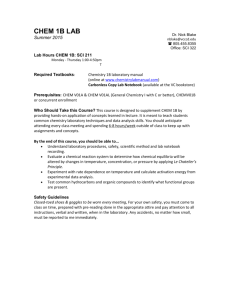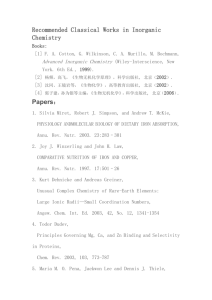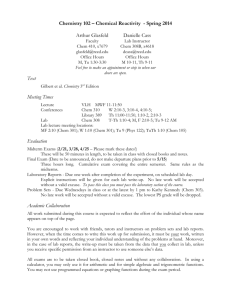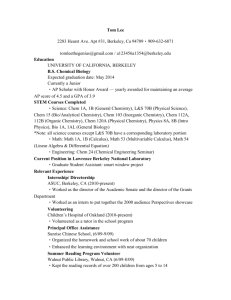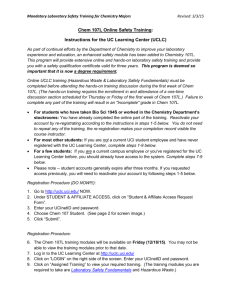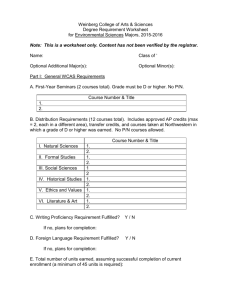CHEM 115-080 Intro to Chemical Sciences
advertisement
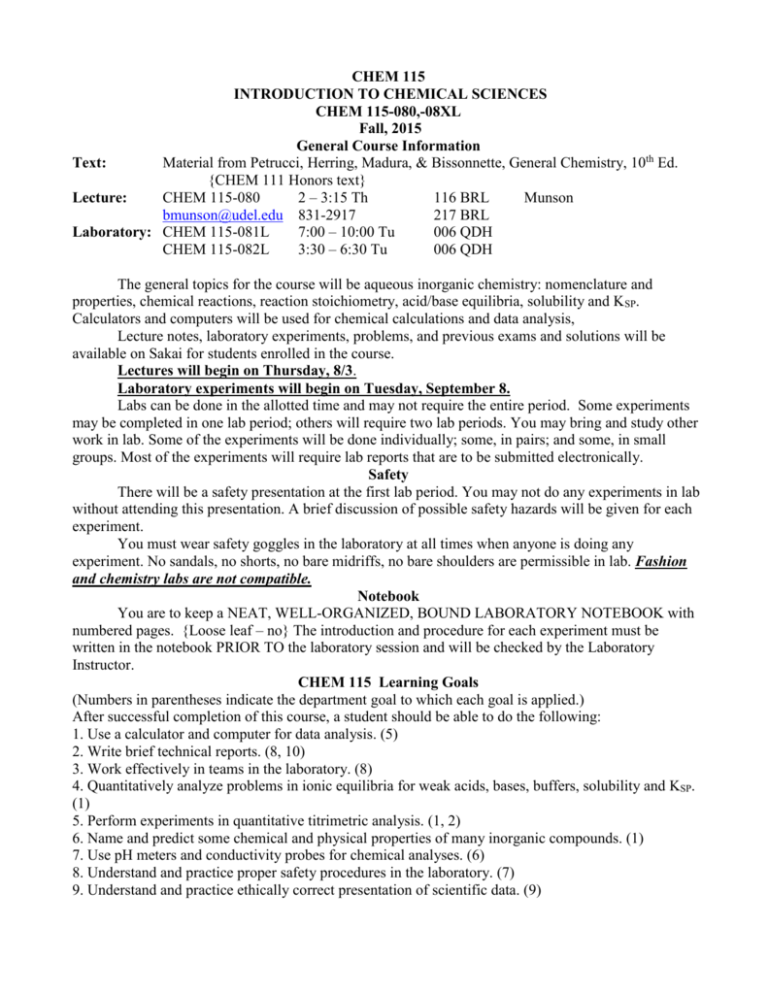
CHEM 115
INTRODUCTION TO CHEMICAL SCIENCES
CHEM 115-080,-08XL
Fall, 2015
General Course Information
Text:
Material from Petrucci, Herring, Madura, & Bissonnette, General Chemistry, 10th Ed.
{CHEM 111 Honors text}
Lecture:
CHEM 115-080
2 – 3:15 Th
116 BRL
Munson
bmunson@udel.edu 831-2917
217 BRL
Laboratory: CHEM 115-081L
7:00 – 10:00 Tu
006 QDH
CHEM 115-082L
3:30 – 6:30 Tu
006 QDH
The general topics for the course will be aqueous inorganic chemistry: nomenclature and
properties, chemical reactions, reaction stoichiometry, acid/base equilibria, solubility and K SP.
Calculators and computers will be used for chemical calculations and data analysis,
Lecture notes, laboratory experiments, problems, and previous exams and solutions will be
available on Sakai for students enrolled in the course.
Lectures will begin on Thursday, 8/3.
Laboratory experiments will begin on Tuesday, September 8.
Labs can be done in the allotted time and may not require the entire period. Some experiments
may be completed in one lab period; others will require two lab periods. You may bring and study other
work in lab. Some of the experiments will be done individually; some, in pairs; and some, in small
groups. Most of the experiments will require lab reports that are to be submitted electronically.
Safety
There will be a safety presentation at the first lab period. You may not do any experiments in lab
without attending this presentation. A brief discussion of possible safety hazards will be given for each
experiment.
You must wear safety goggles in the laboratory at all times when anyone is doing any
experiment. No sandals, no shorts, no bare midriffs, no bare shoulders are permissible in lab. Fashion
and chemistry labs are not compatible.
Notebook
You are to keep a NEAT, WELL-ORGANIZED, BOUND LABORATORY NOTEBOOK with
numbered pages. {Loose leaf – no} The introduction and procedure for each experiment must be
written in the notebook PRIOR TO the laboratory session and will be checked by the Laboratory
Instructor.
CHEM 115 Learning Goals
(Numbers in parentheses indicate the department goal to which each goal is applied.)
After successful completion of this course, a student should be able to do the following:
1. Use a calculator and computer for data analysis. (5)
2. Write brief technical reports. (8, 10)
3. Work effectively in teams in the laboratory. (8)
4. Quantitatively analyze problems in ionic equilibria for weak acids, bases, buffers, solubility and KSP.
(1)
5. Perform experiments in quantitative titrimetric analysis. (1, 2)
6. Name and predict some chemical and physical properties of many inorganic compounds. (1)
7. Use pH meters and conductivity probes for chemical analyses. (6)
8. Understand and practice proper safety procedures in the laboratory. (7)
9. Understand and practice ethically correct presentation of scientific data. (9)

